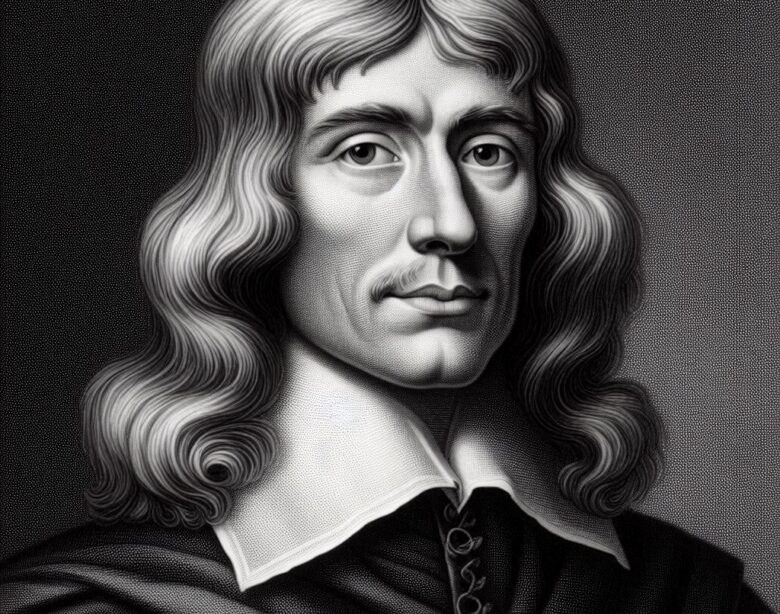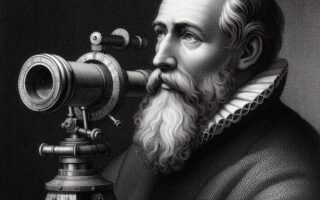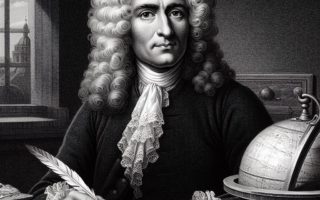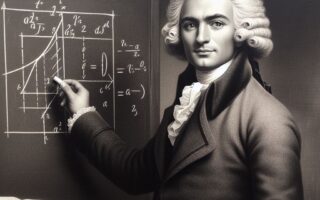Newton: The Mathematician Who Revolutionized Science
Sir Isaac Newton (1642–1727) is universally recognized as one of the most influential scientists and mathematicians in history. His contributions laid the groundwork for classical mechanics, modern physics, and mathematics. Newton’s groundbreaking work in fields such as calculus, optics, and gravitation has shaped the development of modern science and continues to have an enormous impact on both theoretical and applied disciplines. His seminal work, Philosophiæ Naturalis Principia Mathematica (commonly known as the Principia), is regarded as one of the most important books in the history of science.
Early Life and Education
Isaac Newton was born on Christmas Day in 1642 in the small village of Woolsthorpe, Lincolnshire, England. His early life was marked by personal hardships: his father died before his birth, and his mother remarried, leaving Newton in the care of his maternal grandmother. Despite these challenges, Newton demonstrated an early aptitude for learning. At the age of 12, he attended The King’s School in Grantham, where his curiosity and intellectual abilities began to flourish.
Newton later attended Trinity College, Cambridge, where his education in classical philosophy and mathematics would take shape. While the curriculum was largely based on the works of Aristotle, Newton was drawn to the modern ideas of philosophers and mathematicians such as René Descartes and Johannes Kepler. During the Great Plague of 1665–1666, which led to the closure of the university, Newton returned to Woolsthorpe. It was during this period of isolation that Newton laid the foundation for some of his most significant contributions to mathematics and science.
Development of Calculus
One of Newton’s most profound contributions to mathematics was the development of calculus. Calculus is the branch of mathematics that deals with the study of continuous change, and it has become a fundamental tool in both pure and applied mathematics. Newton referred to his version of calculus as the “method of fluxions” and used it to describe the motion of objects over time.
Calculus enabled Newton to express rates of change, such as the velocity of an object at a specific moment or the area under a curve. Though the development of calculus was largely concurrent with that of the German mathematician Gottfried Wilhelm Leibniz, Newton’s version of calculus was rooted in the physics of motion and forces. Despite a heated dispute between their followers over who had priority in discovering calculus, both Newton and Leibniz are credited with laying the foundations of this vital mathematical discipline.
Calculus has since become indispensable in physics, engineering, economics, and countless other fields. Newton’s contributions in this area provided a mathematical framework that allowed scientists to describe and predict physical phenomena with unprecedented precision.
Laws of Motion and Universal Gravitation
In 1687, Newton published his monumental work, the Philosophiæ Naturalis Principia Mathematica (often simply called the Principia). In this work, Newton formulated the three laws of motion that became the cornerstone of classical mechanics:
- First Law (Inertia): An object at rest stays at rest, and an object in motion continues in motion with the same speed and in the same direction unless acted upon by an external force.
- Second Law (Force and Acceleration): The acceleration of an object is directly proportional to the net force acting upon it and inversely proportional to its mass (F = ma).
- Third Law (Action and Reaction): For every action, there is an equal and opposite reaction.
These laws allowed scientists to understand how objects move and interact with forces. Newton’s second law, in particular, revolutionized the study of motion by providing a precise mathematical relationship between force, mass, and acceleration.
In addition to the laws of motion, Newton introduced the concept of universal gravitation. This groundbreaking theory proposed that every mass in the universe exerts an attractive force on every other mass, and the strength of this force is proportional to the masses involved and inversely proportional to the square of the distance between them. The universal law of gravitation allowed Newton to explain the motion of planets, moons, and other celestial bodies. It also provided the theoretical framework for explaining phenomena such as ocean tides and the orbits of comets.
Newton’s laws of motion and gravitation formed the basis for classical mechanics, a field that would dominate scientific thought for the next 200 years. These concepts continue to be essential in many areas of science and engineering, from aerospace design to mechanical engineering.
Contributions to Optics
In addition to his work in mathematics and mechanics, Newton made significant contributions to the field of optics. His interest in light and color led to groundbreaking experiments that challenged the conventional wisdom of his time.
One of Newton’s most famous experiments involved passing sunlight through a glass prism, which separated the light into a spectrum of colors. This experiment demonstrated that white light is composed of different colors, contradicting the prevailing theory that white light was pure and colorless. Newton concluded that light is made up of particles (which he called “corpuscles”) and that each color of light corresponds to a different type of particle.
Newton’s work in optics was published in his 1704 book Opticks, which became one of the most influential works on the subject for centuries. His discoveries in this area laid the foundation for modern theories of light and color, and his particle theory of light, though later supplanted by wave theory and quantum mechanics, played a critical role in the development of optical science.
Impact on Astronomy
Newton’s contributions to astronomy were also profound. Building on the work of Johannes Kepler and Galileo Galilei, Newton applied his laws of motion and universal gravitation to explain the motion of planets and other celestial bodies. Using his mathematical framework, Newton was able to derive Kepler’s laws of planetary motion, which describe how planets orbit the sun in elliptical paths.
One of the most significant astronomical problems Newton solved was the motion of comets. He demonstrated that comets move in elliptical orbits just like planets, and he accurately predicted the return of Halley’s Comet, a feat that further cemented his reputation as one of the greatest scientists of his time.
Newton’s work on celestial mechanics provided the theoretical foundation for modern astronomy, allowing scientists to predict the motion of planets, moons, and comets with great precision. His laws of motion and universal gravitation are still used today in space exploration and satellite technology.
Legacy and Influence on Modern Science
Isaac Newton’s impact on the history of mathematics and science cannot be overstated. His work provided a unified framework for understanding the physical world and laid the foundation for nearly every branch of modern science. The concepts of calculus, motion, and gravitation that Newton introduced have become fundamental tools in physics, engineering, and applied mathematics.
Moreover, Newton’s method of scientific inquiry—emphasizing observation, experimentation, and mathematical rigor—became the standard for scientific research in the centuries that followed. His work marked the beginning of the Scientific Revolution, a period that saw the rapid advancement of scientific knowledge and methodology.
In the centuries following Newton’s death, scientists such as Albert Einstein and James Clerk Maxwell built upon his discoveries. Einstein’s theory of general relativity, for example, expanded on Newton’s concept of gravity, offering a more complete understanding of the curvature of spacetime. Yet, even with the advent of new theories, Newton’s contributions remain fundamental to the study of physics and mathematics.
Conclusion
Sir Isaac Newton’s contributions to mathematics, science, and astronomy have had an indelible impact on human knowledge and progress. His development of calculus, formulation of the laws of motion, and discovery of universal gravitation revolutionized the way we understand the physical world. Newton’s work laid the foundation for the development of classical mechanics and optics, and his influence continues to shape modern science and technology. His genius and scientific rigor earned him a place among the greatest thinkers in history, and his legacy continues to inspire future generations of scientists, mathematicians, and engineers.
Please Visit Our Sponsors:
We only support vendors that we use ourselves in our home. The links below are our own links or affiliate links but know that we use all of these now, or have in the past. As the author/creator of this blog, I also tutor mathematics on Wyzant, sell on Etsy, create content on TpT, and learn Korean on Rosetta Stone.





